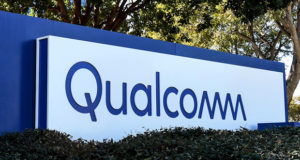Any retailer that wants to be competitive knows it must offer a seamless omnichannel experience to its customers.
However, many retailers aren’t aware that the key to powering that customer experience is IT system performance. Why? Omnichannel retailers must process, analyze and use huge amounts of data for a multitude of equally important functions.
An omnichannel strategy creates and executes a seamless shopping experience across mobile, online, and brick-and-mortar stores. Retailers with omnichannel strategies have a 91 percent greater annual customer retention rate, according to V12.
By 2025, businesses of all kinds will be facing a 50-fold increase in data. Omnichannel retailers are no exception. In fact, they may face even bigger challenges as they try to meet customer expectations:
- While average retail inventory accuracy is about 65 percent, omnichannel fulfillment requires at least 95 percent accuracy to provide customers a seamless experience.
- Along with accurate inventory, omnichannel retailers also must integrate data from the supply chain, customer relations management, credit and collections, marketing and sensor networks.
- As retailers incorporate the Internet of Things, data volume and the need for sophisticated analytics will increase even more.
This means retailers must have big data and fast data, which of course increases IT performance requirements. In many cases, strained IT system components already struggle to execute essential database integration.
How do retailers cope with the computing infrastructure required? Where does that leave smaller businesses and those without the computing power to handle such operations?
The Root Cause of Data Performance Issues
Even though the IT industry has advanced with increasing network and memory speeds, faster processors and more bandwidth, poor input/output performance negates any benefit.
Input/output (I/O) refers to the amount of data that must be read from storage, computed, presented, and then written back to storage, with each action being the input/output.
With the rising tide of data that must be accessed, processed, analyzed and delivered in today’s retail environment, the IT component cannot be ignored. Technology can increase growth in market share and profitability or, conversely, decrease both and lead to bankruptcy. Because of its tremendous impact, it’s important to understand the primary issues surrounding retail IT performance.
There are three main issues that cause I/O bottlenecks:
- Data pipelines
- Non-application I/O overhead
- File system overhead
Each of these issues alone can cause data performance degradations of 30-50 percent. Combined, they spell trouble for virtually any hardware setup.
About 30-40 percent of application performance is being robbed by small, fractured, random I/O generated from the Windows operating system (any Windows operating system, including Windows 10 or Windows Server 2019). While Windows is an amazing solution used by an estimated 80 percent of all systems in the world, there are issues with how it handles I/O:
- Windows handles I/O logically rather than physically, meaning it breaks down reads and writes to their lowest common denominator;
- This results in fractured, random I/O that creates a “noisy” environment;
- Adding a growing number of virtualized systems into the mix results in something known as the I/O blender effect.
SQL Server applications typically are the most I/O-intensive. Excess and noisy I/O is usually the root cause of SQL performance problems, including the following:
- SQL query timeouts
- SQL crashes
- SQL latency
- Slow data transfers
- Slow or sluggish SQL-based applications
- Back-office batch jobs bleeding over into production hours
- Delays in receiving data
Database administrators often resort to these workarounds:
- Tuning queries to minimize the amount of data returned
- Adding extra spindles or flash for performance
- Increasing RAM
- Performing index maintenance to improve read and/or write performance
None of these actions, however, will prevent hardware bottlenecks.
It can be helpful for system administrators to use free I/O performance assessment tools that identify, rank and display a system’s I/O issues across key performance metrics by identifying performance deviations when workload is the heaviest. These tools can be helpful to learn what systems have I/O issues, the level of I/O issues, and how they are impacting performance.
Software Solutions
As they move toward fast data, many retailers mistakenly think that IT infrastructure upgrades are necessary. Hardware upgrades aren’t always the answer — and often do nothing but siphon already-slim profit margins.
New hardware can buy improved performance for a time, but network pipeline challenges will remain because of the sheer amount of data. Think of it as being stuck in traffic on a road that wasn’t built to handle the volume.
Even IT experts are often surprised to learn that software can solve the problem — at a fraction of the cost of hardware and with much less, if any, downtime. Many IT pros are unaware that Windows write inefficiencies generate increasingly smaller writes, multiplying the amount of I/O traffic involved in executing any given task. They also don’t know that this is a software issue, not a hardware issue.
Applying a software solution helps IT managers avoid the disruption of migrating to new systems, rip and replacement of hardware, and end-user training.
Virtualized retailers especially can benefit from using software, since most I/O-intensive applications scale with workload intensity. This typically means applications running on top of SQL/Oracle/SAP, ERP, VDI, OLTP, business intelligence (BI) apps, CRM, Exchange, SharePoint, file servers, backup and more.
iWhether it’s a customer-facing application causing complaints about sluggish performance during peak load, or an administrative application like a batch job or report, software can improve business efficiency and productivity significantly, without the high cost or disruption of new hardware.
Some of the things specialized software can do:
- Eliminate the severe inefficiency in the hand-off of data between the Windows OS and underlying storage system that results in small, fractured writes and reads that dampen the performance of all-flash and hybrid SAN, NAS, hyperconverged and cloud storage. By preventing files from being fractured and broken apart into smaller pieces (with each piece requiring its own I/O operation before being written to disk or SSD in a non-sequential manner), it ensures large, clean contiguous writes and reads for maximum payload with every I/O operation.
- Establish a tier-0 cache strategy by serving hot reads from memory that is otherwise idle or available. Nothing has to be allocated for cache because the software only uses available memory to serve hot reads. Even if there is only 2 GB to 4 GB of available memory, this software can drive big gains by offloading 50 percent or more of the read traffic from storage.
- Operate quietly in the background with near-zero overhead by using only CPU cycles that otherwise are free and idle. This ensures any optimizations to the system have occurred without intrusion on current activities.
Software solutions exist that can address storage performance at the operating system, file system and application levels, boosting performance 30-50 percent or more without a hardware or network upgrade.
The importance of these alternative solutions cannot be underestimated. Retailers often need a performance solution quickly, as every slowdown can cost the organization customers and profits. With budgets tight and profit margins already slim, spending hundreds of thousands of dollars (or more) on new hardware is simply not an option for many retailers.
Fortunately, there are software-only solutions that have been proven to improve performance dramatically at a fraction of the cost. Software is an alternative the retail market should consider.















































